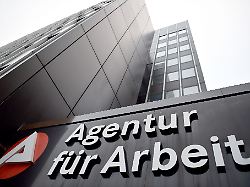Update
Impact of the economic downturn
Unemployment numbers are increasing compared to the previous year
November 30, 2023, 10:57 a.m
The number of unemployed fell slightly in November compared to the previous month. Compared to the same month last year, the number of unemployed people has increased noticeably. However, there is a ray of hope in the balance sheet.
The number of unemployed people in Germany fell by 1,000 to 2.606 million in November compared to the previous month. However, that is 172,000 more than in November 2022, said the Federal Employment Agency in Nuremberg. The unemployment rate was 5.6 percent in November after 5.7 percent in October.
Last year the number of unemployed fell by 8,000 from October to November. For its November statistics, the Federal Agency used data that was available up to November 13th.
“The economic downturn continues to leave its mark on the German labor market,” said the Federal Agency’s CEO, Andrea Nahles. “Unemployment and underemployment have increased in seasonally adjusted terms. Employment is growing only slightly and reported labor demand continues to decline,” she explained.
In the detailed analysis, the Federal Agency’s data reveals exactly where the demand for workers is falling particularly significantly. A look at the map of Germany shows that the regions in the northeast and the Ruhr area in particular have an above-average unemployment rate. There are also more unemployed people than the national average in Bremen, Bremerhaven and Saarland. In general, employment agencies report a higher rate in larger cities than in rural areas.
Across Germany, the regional unemployment rates range from peaks of 14.1 percent in Bremerhaven and Gelsenkirchen to well below three percent in individual regions in the south. The well-known north-south divide in the German labor market is now more apparent in the BA data than the regional differences between east and west.
There are several districts in Bavaria that are reporting an unemployment rate of 2.0 percent for November 2023 – despite the economic downturn and the generally difficult outlook. At values below three percent, economists and labor market politicians speak of almost full employment. Measured by the proportion of unemployed, districts such as Bad Tölz – Wolfratshausen south of Munich or Pfaffenhofen an der Ilm are among the economically strongest regions in Germany.
The number of mini-jobbers is increasing
In November, 733,000 job vacancies were registered with employment agencies. That’s 90,000 fewer than a year earlier. According to the Federal Statistical Office, the number of employed people rose by 15,000 to 46.26 million in October. That’s 272,000 more than a year ago. The increase is primarily due to immigrants.
The number of mini-jobbers has increased. A total of 7.6 million people were marginally employed in September – newer figures are not available – 201,000 more than in the same month last year. Of these, 4.19 million were employed exclusively and 3.42 million were employed in part-time jobs.
